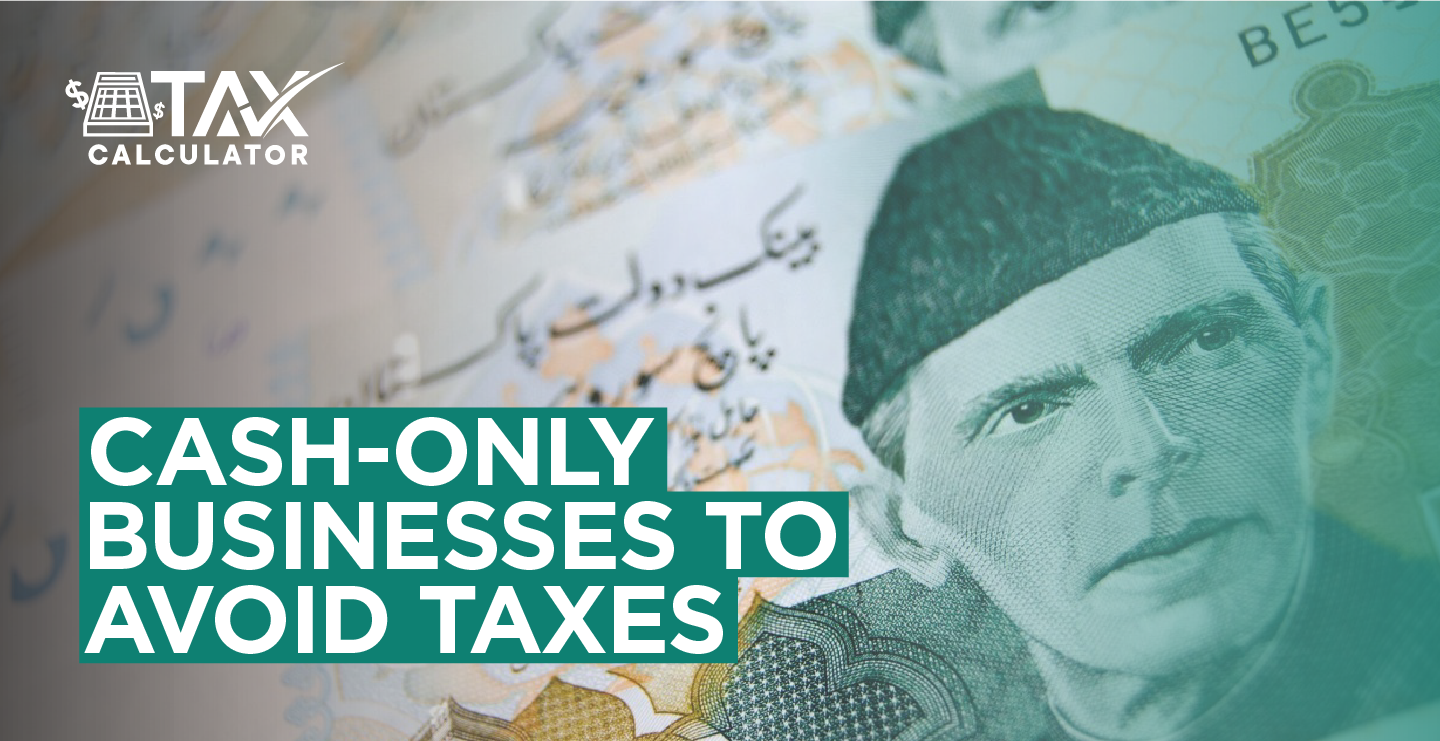Withholding tax is a concept that quietly shapes a huge part of the country’s revenue system — yet, for most people, it remains a confusing, often overlooked detail.
And it’s not just a minor piece of the puzzle — withholding tax is the backbone of Pakistan’s income tax collection, constituting 29% of the FBR’s total collection, equating to around 60% of income tax during the fiscal year, based on the FBR report of 2023-24. That’s nearly three-quarters of all income tax! It’s a staggering figure that underscores just how central withholding tax is to keeping the country’s financial engine running.
In this blog post, we’ll discuss everything you need to know about withholding tax in Pakistan: from the laws that govern it, to the current rates, who needs to comply, and practical tips for managing it smarter.
What is Withholding Tax?

Withholding tax in Pakistan is an advance form of income tax collected at the source — deducted before the income or payment even reaches the recipient. It works much like a “Pay-as-You-Earn” system, ensuring the government receives tax revenue throughout the year rather than waiting for annual returns.
Applied across a wide range of incomes, transactions, and payments, it covers both individuals and businesses. The responsibility for collecting this tax falls on the withholding agent — whether a person or a company — who must deduct the specified amount and deposit it to the government, usually within 15 days of collection, either online or through authorized banks.
The system is designed to streamline revenue collection, enhance compliance, and curb tax evasion.
Legal Framework Governing Withholding Tax
In Pakistan, withholding tax is broadly categorized into domestic and international transactions, each with its own set of rules, rates, and responsibilities.The Income Tax Ordinance of 2001 provides the comprehensive rules and regulations concerning the deduction and collection of tax at the source of various types of transactions. The withholding tax regime has changed the budget through the Finance Acts over the years. There has been a drastic increase in the WHT provision during the previous twenty years.
1. Salaries (Section 149)
For salaried individuals, employers are responsible for deducting withholding tax at the time of salary disbursement. The tax rate depends on the employee’s annual taxable income, following a progressive tax slab system outlined in the Income Tax Ordinance, 2001.
Salaried individuals who have already submitted their wealth statements and tax returns are taxed according to standard rates, but for non-filers, there is stricter scrutiny, although salary income is generally less impacted by filer status compared to business payments.
| Annual Taxable Income (PKR) | Tax Rate |
| Up to 600,000 | 0% |
| 600,001 – 1,200,000 | 5% of the amount exceeding 600,000 |
| 1,200,001 – 2,200,000 | 30,000 + 15% of the amount exceeding 1,200,000 |
| 2,200,001 – 3,200,000 | 180,000 + 25% of the amount exceeding 2,200,000 |
| 3,200,001 – 4,100,000 | 430,000 + 30% of the amount exceeding 3,200,000 |
| Above 4,100,000 | 700,000 + 35% of the amount exceeding 4,100,000 |
2. Dividend Income (Section 150)
Whenever a company pays dividends to its shareholders, it must deduct withholding tax at the time of payment and deposit it with the FBR. The WHT is applicable to cash dividends, stock dividends, mutual fund distributions, and real estate investment trusts’ income distributions.
| Description | ATL, Active Taxpayer List (Filer) | Not on ATL |
| Independent Power Purchase where the Dividend is a Pass Through Item | 7.5% | 15% |
| Mutual Funds | 25% | 50% |
| REIT Scheme | 0% | 0% |
| Dividend from Special Purpose Vehicle | 35% | 70% |
| Company with Exemption of Income or Carry Forward of Business Losses | 25% | 50% |
3. Profit on Debt (Section 151)
A person paying profit/yield has to deduct tax from the gross amount of yield/profit. The section also mandates the WHT on profit on the debt a banking company or financial institution paid on the amount of deposit maintained.
| Category | Filer Rate | Non-Filer Rate |
| Up to Rs. 5 million | 15% | 35% |
4. Payment to Non-Residents (Section 152)
When businesses or individuals in Pakistan make payments to non-residents for dividends, interest, royalties, or fees for technical services, withholding tax rules are applied with specific rates. Generally, dividend payments to non-residents are taxed at around 15%, interest payments may be subject to 10% to 20%, and royalties and technical services often fall around 15%.
However, these rates can be reduced significantly under Double Taxation Agreements (DTAs) that Pakistan has signed with various countries. These treaties are designed to prevent the same income from being taxed in both countries and often offer favorable terms if the non-resident provides the required documentation.
| Recipient (1, 2, 3) | WHT (%) | ||
| Dividends | Interest | Royalties | |
| Non-resident individuals | |||
| Non-treaty | 15 | 10 | 15 |
| Treaty | (4) | (4) | (4) |
| Non-resident corporations | |||
| Non-treaty | 15 | 10 | 15 |
| Treaty: | (4, 5) | (4, 6) | (4) |
5. Payment for Good & Sevices (Section 153)
When companies or even certain individuals make payments for goods and services, they are obligated to deduct withholding tax at prescribed rates. The rates vary significantly between filers and non-filers — non-filers often face a higher deduction to encourage tax compliance. For instance, payments made by companies to suppliers typically attract withholding tax ranging from 4% to 4.5% for filers, while non-filers might be charged a higher rate, often around 6%. Services such as legal consulting, advertising, and professional fees also carry specific rates under the law.
Goods (Section 153)
| Category | Filer Rate | Non-Filer Rate |
| Company (Other Goods) | 5% | 10% |
| Company (Toll Manufacturing) | 9% | 18% |
| Individual/AOP (Other Goods) | 5.5% | 11% |
| Individual/AOP (Toll Manufacturing) | 11% | 22% |
| Sale of Rice, Cotton Seed, Edible Oils | 1.5% | 3% |
Contracts (Section 153)
| Category | Filer Rate | Non-Filer Rate |
| Company | 7.5% | 15% |
| Individual/AOP | 8% | 16% |
6. Commission & Brokerage (Section 233)
Rent payments to property owners, payments under contractual agreements, and commission income are also subject to withholding tax. The tax on rent depends on the amount paid and whether the landlord is a filer or non-filer.
Want to know exactly how much withholding tax you owe on rental income? Use PakTaxCalculator Withholding Tax Calculator for Property Income to get accurate, instant results.
Contract payments generally attract a 7% withholding tax for filers and higher for non-filers, whereas commission agents might face deductions of around 12% or more if they are not listed as filers. Thresholds also apply — meaning certain small-value transactions might be exempt or taxed at lower rates.
| Type | Filer Rate | Non-Filer Rate |
| Advertising Agents | 10% | 20% |
| Life Insurance Agents (Up to Rs. 5M) | 8% | 16% |
| Other Agents | 12% | 24% |
Make sure you are deducting the right amount of tax. Use our Withholding Tax Calculator for Brokerage and Commission Income to get quick, accurate calculations and stay on top of your tax obligations.
7. Prize & Winning Amounts (Section 156)
The section mandates the payments made on account of winning a prize on a prize bond, crossword, raffle, lottery & quiz. The tax is collected by the person paying the prize money and paid by the winner.
| Category | Filer Rate | Non-Filer Rate |
| Prize Bonds & Crossword Puzzles | 15% | 30% |
| Lotteries, Raffles, Quiz Wins | 20% | 40% |
8. Sale by Auction (Section 236A)
When goods or property are sold by public auction or tender, the WHT must be collected from the purchase at the time of sale. The idea is to capture tax at the point of large asset transfers or government sales. Auctioneers or government departments selling assets collect WHT.
| Asset Type | Filer Rate | Non-Filer Rate |
| Immovable Property | 5% | 10% |
| Other Than Immovable Property | 10% | 20% |
9. Debit & Credit Card Transactions (Section 236Y)
If a person uses a credit card, debit card, or prepaid card to send payments abroad, the bank must collect advance tax at the time of the transaction. It is a recent update in the Income Tax Ordinance 2001 that is developed to decrease dollars outflow.
| Transaction Type | Filer Rate | Non-Filer Rate |
| International Card Transactions | 5% | 10% |
10. Cash Withdrawals from Bank (Section 231A)
Section 231A mandates the WHT on cash withdrawals exceeding Rs 50,000. It mandates that the banking company deduct WHT from the account holder who is withdrawing cash. The goal is to encourage banking documentation and discourage large cash transactions.
| Withdrawal Amount | Filer Rate | Non-Filer Rate |
| Exceeding Rs. 50,000 | Exempt | 0.6% |
11. Motor Vehicles (Section 231B)
When you purchase, register, or transfer ownership of a private motor vehicle, a Withholding tax must be collected by the excise and taxation department or the manufacturer. This is paid at the time of first registration, transfer of ownership, or sale by a vehicle manufacturer.
| Engine Capacity (cc) | Filer Rate (% of value) | Non-Filer Rate (% of value) |
| Up to 850 | 0.5% | 1.5% |
| 851 – 1,000 | 1% | 3% |
| 1,001 – 1,300 | 1.5% | 4.5% |
| 1,301 – 1,600 | 2% | 6% |
| 1,601 – 1,800 | 3% | 9% |
| 1,801 – 2,000 | 5% | 15% |
| 2,001 – 2,500 | 7% | 21% |
| 2,501 – 3,000 | 9% | 27% |
The FBR withholding tax table gives a clear value and shows how it applies to different incomes.
Withholding Tax Compliance Obligations for Taxpayers
Income Tax Ordinance 2001 specifies “prescribed persons” who must deduct or collect withholding tax when making certain payments or transactions. Here are the entities that withhold taxes:
- Federal Government, Provincial Governments, and Local Governments
- Public and Private Companies
- Association of Persons (AOPs)
- Banking and Financial Institutions
- Non-Profit Organizations
- Exporters and Importers
- Stock Exchanges, Insurance Companies
- Service Providers
- Auctioneers, Property Developers, Builders
- Registrars of Properties
- Motor Vehicle Dealers
- Educational Institutions
- An individual can also become a withholding agent if carrying on business with an annual turnover exceeding a prescribed limit.
Any entity making payments or involved in a transaction specified under the Income Tax Ordinance is obligated to withhold tax.
Filing and Payment Deadlines
The timeline for depositing withheld taxes and submitting related statements is strictly regulated to ensure timely revenue collection. It must be deposited into the government treasury using a Challan (CPR-Computerized Payment Receipt). The tax must be paid by the 15th day of the following month. For example, tax withheld in April 2025 must be deposited by May 2025.
Withholding agents can also file quarterly withholding tax statements via the FBR’s IRIS portal.
Quarterly statement filing deadlines:
| Quarter | Period | Due Date |
| Q1 | July – September | October 20 |
| Q2 | October – December | January 20 |
| Q3 | January – March | April 20 |
| Q4 | April – June | July 20 |
The statement must include full details of
- Amount Paid
- Tax Deducted
- Name, CNIC, and NTN of Recipients
Penalties for Non-Compliance
Failure to comply with withholding tax obligations can lead to significant penalties and consequences.
Any person who fails to collect or deduct tax as required under any provision of this ordinance or fails to pay the collected or deducted tax as required: Such person shall pay a penalty of forty thousand rupees or 10% of the amount of tax, whichever is higher.
The sections of the ordinance to which the offence has applicable to:
Sections 148, 149, 150, 151, 152, 153, 153A, 154, 155, 156, 156A, 156B, 158, 160, 231A, 231B, 233, 233A, 234, 234A, 235, 236, and 236A are the ordinance section to which the penalty is applied.
Residents who have overpaid withholding taxes can claim a refund by filing an income tax return at the end of the tax year. As mentioned above, record-keeping is vital because you have to provide evidence of withholding tax deductions.
Strategic Withholding Tax Planning Tips
- Always keep track of the latest rates for goods, services, and payments made to vendors, contractors, or employees. Staying updated with the tax laws updates will ensure you are never caught off guard.
- When making payments that require withholding tax, make sure to deduct and deposit the tax promptly. The deadlines are strict — failing to do so could lead to penalties and interest charges.
- Keep detailed records of all transactions where withholding tax is applied. This helps not just for tax reporting, but also in case of audits or disputes. Having organized documentation will save time and stress during tax season.
- Ensure that your employer or any other withholding agents are applying the right tax rate to your income. If you are a filer, make sure your tax status is updated with the tax authorities so you are taxed at the correct rate. If you are a non-filer, be aware that you might face higher rates on things like commission payments, rents, and other services. Not sure what it means to be a filer and non-filer? Learn the difference here.
- Check your payslips or invoices to confirm that withholding tax is being deducted correctly. If you notice any discrepancies, raise the issue promptly with the relevant authority or your employer.
- If you have paid more tax than you should have, you can claim a refund through your tax return. Make sure to keep track of all overpayments and submit refund claims as soon as possible.
How to Claim Your Withholding Tax?
Withholding tax can be refunded by the government at the end of the year. However, certain conditions must be met for this to happen.
- You must pay annual tax.
- You must file tax returns on time every year
If you fulfill these conditions, you can get back the excess withholding tax you paid throughout the year.
To get a refund of your paid withholding tax, you need to keep track of the receipts and bills for any expenditure incurred throughout the year. Look for bills that mention WHT, withholding tax, or advance income tax on receipts and bills, and keep them in your possession. With them, you have evidence of the withholding tax you paid during the whole year.
Now it’s time to claim the excess withholding tax you paid:
- Visit the FBR’s IRIS portal and fill out the refund application form.
- Provide evidence of the deduction of the withholding tax and submit it for review.
Once you have submitted the application and provided the necessary documents, your refund will be processed and transferred to your bank account or paid via a cheque in your name.
Recent Developments and Changes in Withholding Tax Pakistan
The Federal Board of Revenue (FBR) has introduced a 10% advance tax on foreign payments made through debit or credit cards under Section 236Y as a measure to restrain tax evasion and formalize transactions digitally. The tax is applicable on the gross amount remitted abroad using cards. The tax rate for filers is increased from 5% to 1%, while non-filers have to pay 10% WHT.
This policy is for individuals and businesses making payments for goods or services purchased abroad using their credit or debit cards. The goal is to slow the outflow of dollars and improve the country’s foreign exchange reserves by addressing existing loopholes.
The Finance Act, 2021, brought some relief for taxpayers by abolishing certain withholding taxes, including WHT on banking transactions, which had been a controversial issue for many individuals and businesses. Previously, a withholding tax was applied to a wide range of banking transactions, often causing confusion and inconvenience.
These recent updates are made to offload the tax burden of account holders and encourage more financial transactions to move through the formal banking system.
FAQs
How can individuals or companies apply for withholding tax exemption certification?
Taxpayers can apply for an exemption certificate through the FBR’s IRIS portal. You have to submit various documents such as financial statements and prior years’ tax returns. The exemption allows specified payments to be made without deduction of withholding tax.
How can a taxpayer verify if withholding tax deducted on their behalf has been deposited to the FBR?
Taxpayers can check their online FBR withholding records by logging into their IRIS account under the “withholding tax” tab and verifying CPRs linked to their CNIC or NTN.
Conclusion
Withholding tax is a big part of how the government collects money in Pakistan. If you are an individual, a business owner, or running an organization that has to deduct tax, keep track of everything – that’s how it all works. Understand the rules, the rates, and the right way to handle things that can save you a lot of trouble later on and help you stay on the safe side.
Keeping yourself updated and managing your taxes properly can actually make life a lot easier — and it could even save you money in the long run.
If you need expert support in understanding, managing, or planning your withholding tax obligations, call us at 0321-6306286 for personalized assistance.



